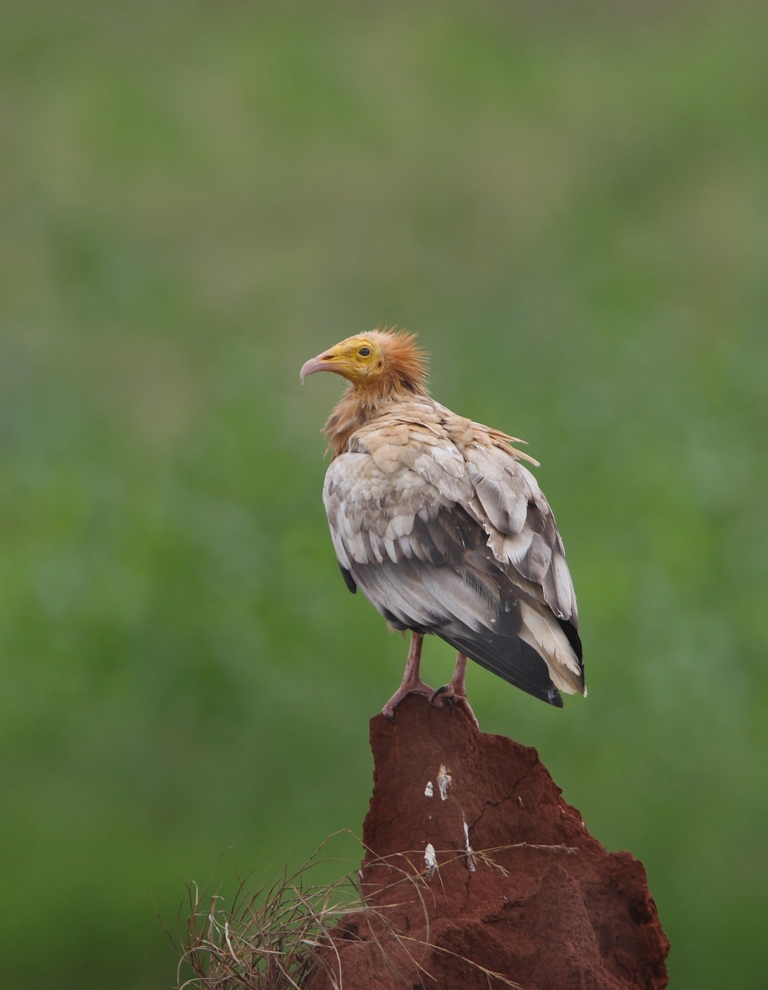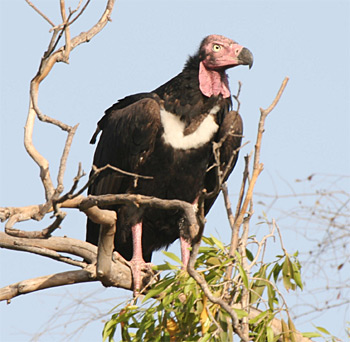Diclofenac For Vultures Has Been A Disaster
By Marianne de Nazareth
15 March, 2014
Countercurrents.org
Two years ago I had done a story on the drastic decline in the populations of the three Gyps species of vultures, which are the White-backed, Long-billed and Slender-billed, in South Asia over the past decade, due to the veterinary painkiller diclofenac, which has been an environmental disaster.
Beginning in the mid-1990s, five species of vultures have declined rapidly throughout South Asia. Researchers found that the non-steroidal anti-inflammatory drug (NSAID) diclofenac is highly toxic to Gyps. Vultures ingest diclofenac when they feed upon carcasses of dead cattle that have been treated with the drug shortly before death and it was estimated that less than 0.8% of the carcasses available to foraging vultures would need to contain a lethal dose of diclofenac, to have caused the observed population declines.
Efforts to achieve voluntary withdrawal of use of veterinary diclofenac began in 2004 in India. The licence to manufacture veterinary formulations of diclofenac was withdrawn by the Drug Controller General of India in 2006. The ban was adopted in Pakistan and Nepal in the same year and in Bangladesh in 2010. Happily the cattle carcasses checked in India since the 2006 ban has shown a decline in the prevalence and concentration of diclofenac in their tissues.

Egyptian Vulture - Clement Francis
Now research conducted over the years is revealing that diclofenac could have also possibly caused decline in numbers of other vulture species such as Red-headed and Egyptian Vulture. However, a positive trend observed is that all vulture species previously affected, seem to be benefitting after the ban on veterinary diclofenac in 2006.

Red-headed Vulture - SAVE photo gallery
Two other species affected
In a recent paper published in the Cambridge Journal – Bird Conservation International, in April 2014, researchers from BNHS-India and Royal Society for the Protection of Birds (RSPB) have stated that just like the three Gyps species, even Egyptian Vulture Neophron percnopterus and Red-headed VultureSarcogyps calvus had declined by nearly 80% and 91% respectively in the Indian subcontinent since the mid-1990s and are now globally threatened. Both species are likely to have showed similar physiological intolerance and exposure risk to diclofenac through a common ancestry and foraging niche with Gyps vultures. The paper examined the records of Red-headed and Egyptian Vultures obtained on road transects in and near protected areas between 1992 and 2011, particularly in northern India. This study comes as one of the strongest evidence that these two vulture species have also been affected by diclofenac.
The paper -- Have population declines in Egyptian Vulture and Redheaded
Vulture in India slowed since the 2006 ban on veterinary diclofenac?
by Galligan, T. et al explains that the populations of three vulture species of the genus Gyps , the Egyptian Vulture Neophron percnopterus and Red-headed Vulture Sarcogyps calvus have declined markedly on the Indian subcontinent since the mid-1990s and all are now Critically Endangered or Endangered. Gyps vultures have been killed by the widely used non-steroidal anti-inflammatory drug diclofenac, ingested when they feed on carcasses of domesticated cattle treated with the drug shortly before death. However, it was not known whether Egyptian Vulture and Red-headed Vulture are also sensitive to diclofenac.
Veterinary use of diclofenac was banned in India in 2006. Since then, the prevalence and concentration of diclofenac in domesticated cattle carcasses have decreased and population declines of Gyps vultures have slowed or reversed. The paper examined the counts of Egyptian and Red-headed Vultures obtained on road transects in and near protected areas between 1992 and 2011.
Researchers found indications that the declines in both species appear to have slowed and possibly increased after the ban was introduced, though the small numbers of birds counted make this conclusion less robust than that for the Gyps species. These results suggest that both species may have been adversely impacted by diclofenac and that government bans on this drug, which are beginning to take effect, may benefit a wider range of vulture species in the Indian subcontinent than was previously thought.
Commenting on the impact on these two species, Chris Bowden, International Species Recovery Officer and SAVE Programme Manager said, “This study clearly shows that not just the Gyps species, but also other vulture species, have been affected by drugs such as diclofenac to varying extents. Future conservation efforts should cover all such species that have been affected, through a broader framework of research and advocacy”.
Ban on Diclofenac imperative
After the ban on veterinary diclofenac by the Government of India due to sustained efforts by BNHS and RSPB, the two organizations have been actively advocating for smaller doses of human diclofenac, under the wider international consortium SAVE (Saving Asia’s Vultures from Extinction), so that the same may not be illegally used on cattle. The positive fallout has been that the prevalence and concentration of diclofenac in domesticated cattle carcasses has decreased and population declines of Gyps vultures have slowed down or even reversed in a few cases. The observations in the later years of the study reveal that the declines in Red-Headed and Egyptian Vultures also seem to have slowed down after the ban. Their numbers have even possibly increased in some areas.
Illustrating the development Dr Asad Rahmani, Director, BNHS said, “The partial recovery of vulture numbers after the ban shows that strong research and advocacy go a long way in effective conservation. Further research should also focus on the current status of Red-headed and Egyptian vultures”.
Looking ahead
" The level of sensitivity to diclofenac in these other two species, when ingested by feeding on cattle carcasses is yet to be known completely. Hence, further research is underway, since till now the sample size for the study of these two species has been smaller than in the case of the Gyps species. Thus, the continued ban on such drugs, and widespread advocacy and search for safer alternatives may benefit a wider range of vulture species in the Indian subcontinent than was previously thought," says Atul Sathe, Manager-Communications, BNHS-India.
(Marianne de Nazareth is a Freelance science and environment journalist and adjunct faculty, St Joseph’s College of Media studies, Bangalore.)
Comments are moderated
